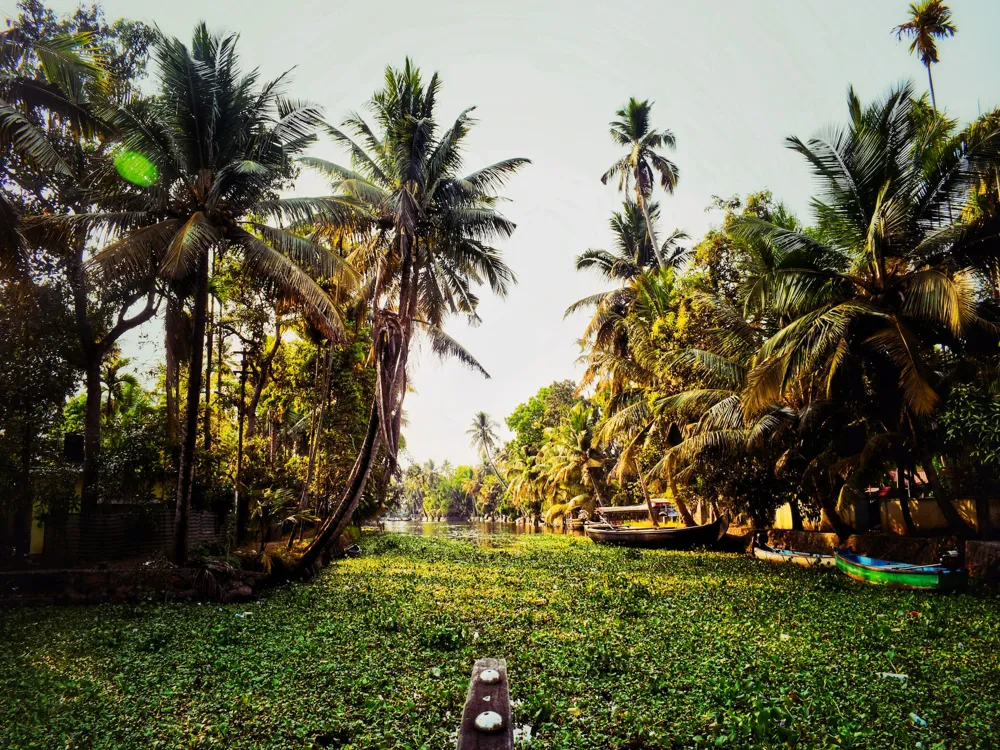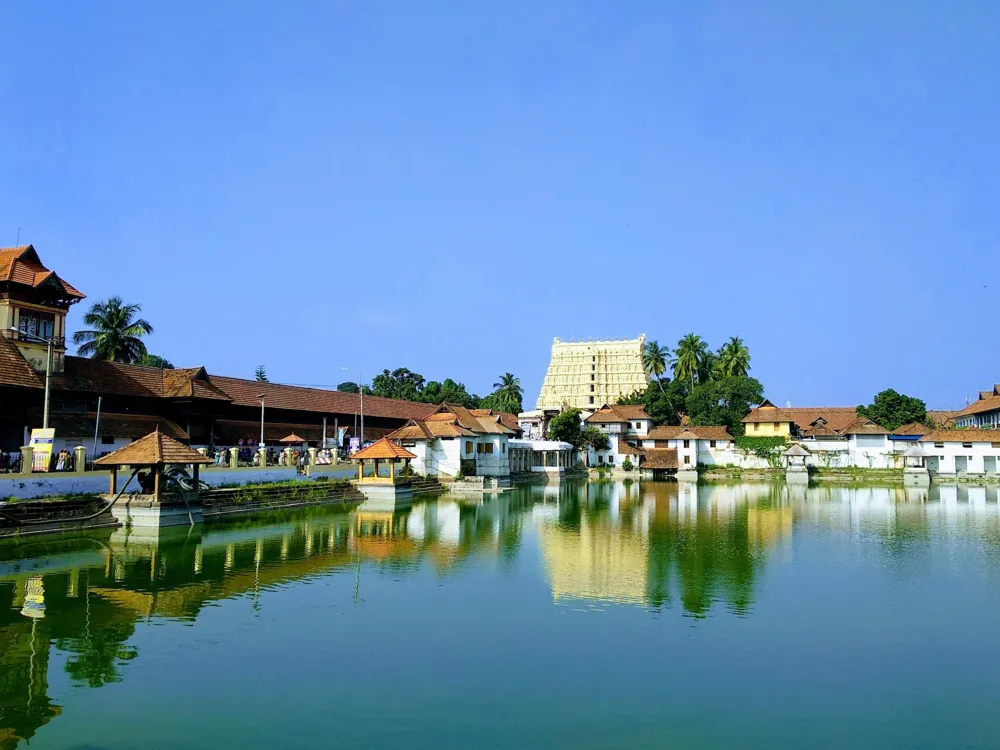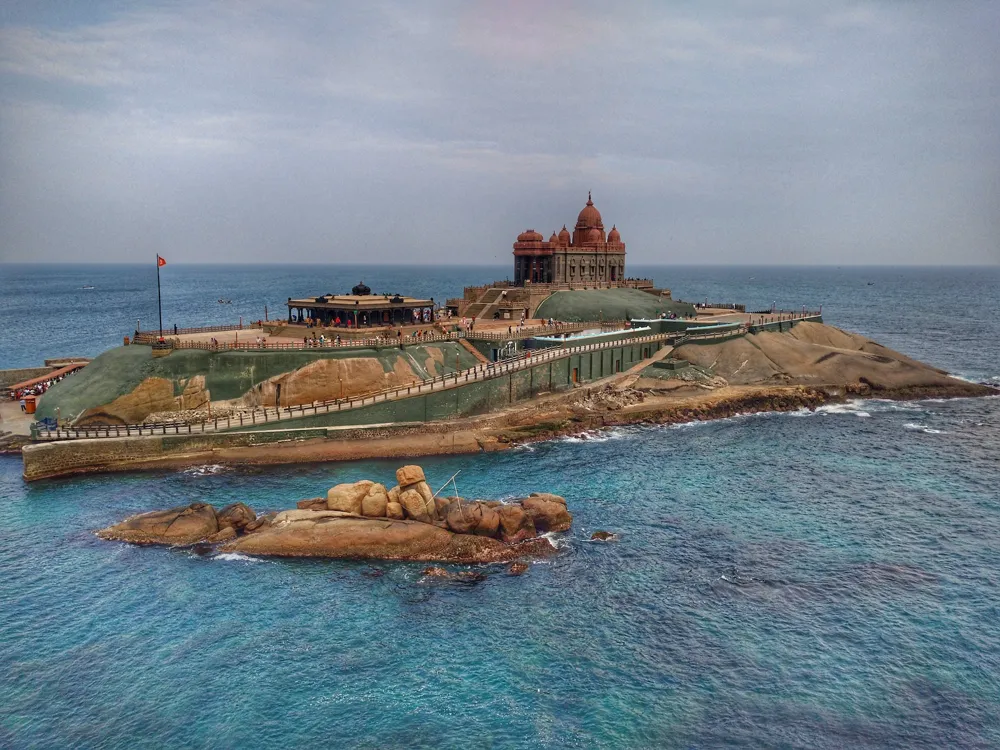Nestled in the serene landscapes of Kollam, Kerala, Panmana Ashram stands as a beacon of spiritual and cultural heritage. Established in memory of the great philosopher and saint, Sree Narayana Guru, this ashram is not just a religious retreat but a symbol of unity and social reform. The ashram's roots are deeply entwined with Kerala's history, mirroring the life and teachings of Sree Narayana Guru, who advocated the principles of 'One Caste, One Religion, One God for Humanity'. This ethos is palpably felt through the ashram's activities and its atmosphere of tranquility and inclusion. The ashram serves as a center for learning and spiritual activities, attracting visitors and devotees from all over the world. Its serene environment offers a perfect setting for meditation and introspection. Apart from its spiritual significance, Panmana Ashram plays an active role in social welfare, running educational institutions, and engaging in charitable activities. The Ashram's library is a treasure trove of knowledge, housing a vast collection of books and manuscripts on philosophy, religion, and social sciences, reflecting the scholarly spirit of Sree Narayana Guru. Annual festivals and rituals at Panmana Ashram are a vibrant showcase of Kerala's rich cultural tapestry. These events not only honor the memory of Sree Narayana Guru but also serve as a platform for social and cultural exchange. The ashram's commitment to social equity and environmental sustainability is evident in its operations, making it a unique blend of spiritual sanctity and modern-day relevance. The architecture of Panmana Ashram is a fascinating amalgamation of traditional Kerala style and functional modernity. Designed to blend seamlessly with the natural surroundings, the structures within the ashram are built using local materials, such as laterite stones and wood. The layout of the ashram is reflective of the principles of Vastu Shastra, ensuring a harmonious balance with nature. The centerpiece of the ashram is the 'Samadhi Mandapam', the final resting place of Sree Narayana Guru. This sacred structure is an architectural marvel, symbolizing the blend of divine and earthly realms. The Mandapam, with its intricately carved pillars and ornate roof, is a splendid example of traditional Kerala temple architecture. Its serene ambiance provides a space for meditation and reflection. Surrounding the Samadhi Mandapam are various other buildings, including the prayer hall, study center, guest houses, and administrative buildings. Each structure is designed with a focus on simplicity and functionality, mirroring the ashram's ethos of modesty and service. The use of open spaces, verandas, and courtyards in the ashram's design facilitates natural ventilation and lighting, creating an environment that is both aesthetically pleasing and ecologically sustainable. The landscape around the ashram complements its architecture, with lush gardens, tranquil ponds, and shaded walkways. These elements not only add to the aesthetic appeal but also create a conducive environment for spiritual practices and community gatherings. The integration of architecture with nature at Panmana Ashram is a testament to its philosophy of living in harmony with the environment. Visitors are advised to dress modestly, respecting the ashram's spiritual ambiance. Traditional Indian attire is recommended. It's important to maintain a quiet and respectful demeanor within the ashram premises, especially in the prayer areas and near the Samadhi Mandapam. Engaging in the ashram's daily activities, like meditation sessions, prayer meetings, and community services, is encouraged. This participation provides a deeper understanding of the ashram's philosophy and practices. Photography may be restricted in certain areas of the ashram. It's advisable to seek permission before capturing photographs, especially in the areas near the Samadhi Mandapam and during rituals or ceremonies. The ashram provides simple accommodation facilities for visitors. Advance booking is recommended due to limited availability. The ashram also serves vegetarian meals, prepared in a hygienic and traditional manner. Visitors are encouraged to adhere to the ashram's principles of environmental sustainability. This includes proper disposal of waste, using water judiciously, and avoiding plastic use within the ashram premises. Panmana Ashram, located in the Kollam district of Kerala, is well-connected by various modes of transport. The nearest airport is Trivandrum International Airport, about 80 kilometers away. From the airport, visitors can hire taxis or use public transport to reach the ashram. Kollam Railway Station, which is well-connected to major cities in India, is the nearest railway station. Regular bus services are also available from different parts of Kerala to Kollam. Once in Kollam, local taxis, auto-rickshaws, or buses can be used to reach Panmana Ashram. Read More:Overview of Panmana Ashram, Kollam, Kerala
Architecture of Panmana Ashram
Tips When Visiting Panmana Ashram
Dress Code and Conduct
Participation in Activities
Photography Guidelines
Accommodation and Food
Environmental Consciousness
How To Reach Panmana Ashram
Panmana Ashram
Kollam
Kerala
₹ 20,300 onwards
View kollam Packages
Weather :
Tags : Ashram
Timings : 8:30 AM - 6:00 PM
Time Required : 1 day
Planning a Trip? Ask Your Question
Kollam Travel Packages
View All Packages For Kollam
Top Hotel Collections for Kollam

Private Pool

Luxury Hotels

5-Star Hotels

Pet Friendly
Top Hotels Near Kollam
Other Top Ranking Places In Kollam
View All Places To Visit In kollam
View kollam Packages
Weather :
Tags : Ashram
Timings : 8:30 AM - 6:00 PM
Time Required : 1 day
Planning a Trip? Ask Your Question
Kollam Travel Packages
View All Packages For Kollam
Top Hotel Collections for Kollam

Private Pool

Luxury Hotels

5-Star Hotels

Pet Friendly






















